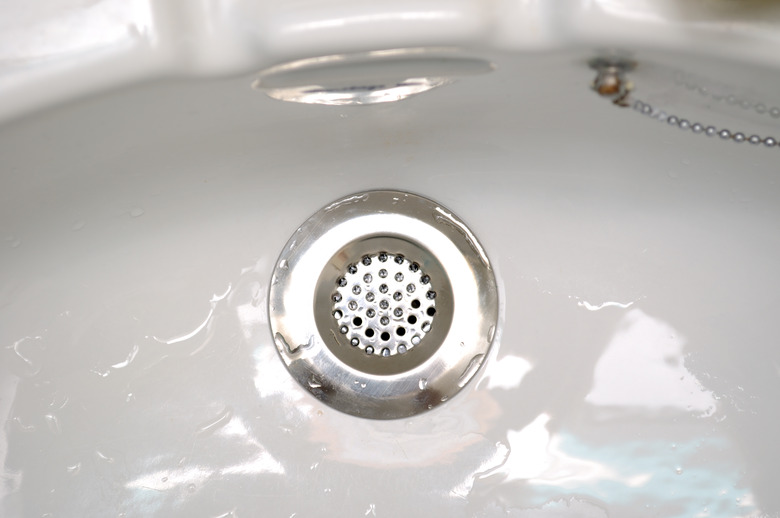Do I Need To Seal Or Caulk A Bathtub Drain?
We may receive a commission on purchases made from links.
Plumbing fixtures, such as bathtub drains, are common sources of water leaks. Sealing or caulking the bathtub drain helps guard against bathtub drainage problems and water damage. The material used to seal this type of plumbing fixture depends on the accessibility of the drainage pipe below your bathtub. The area outside the actual drain may also require sealing to help insulate the tub area.
Tip
Sealing or caulking the bathtub drain helps to prevent drainage problems and water damage. The area outside the drain may also need to be sealed to help insulate the tub area.
Considerations for Bathtub Sealing
Considerations for Bathtub Sealing
Check for an access panel below or beside your bathtub that allows you to reach the piping beneath the drain. If you can access this part of the drain, the best sealant to use is plumber's putty. Plumber's putty forms a tight, waterproof seal in wet areas around bathtub plumbing.
If you are unable to access the underside of the drainage pipe below the tub, you can use silicone caulk on the exposed area of the drain to help create a watertight seal. Once the caulk dries, it forms a firm seal that won't wash away.
Plumber’s Putty for Sealing Bathtub
Plumber's Putty for Sealing Bathtub
Plumber's putty is a thick, moldable substance that forms a tight seal between the underside of the drain lip and the surface of the bathtub. Find plumber's putty at Amazon, Walmart and Home Depot. To apply this material properly, you must first loosen the drain lip by unscrewing the nut below the bathtub drain. This nut attaches to the drainage pipe underneath your bathtub.
Squeeze out the putty into a thin rope that measures approximately a quarter-inch in diameter. Place the putty beneath the loosened drain lip. Working in the area beneath your tub, tighten the nut below the tub to pull the underside of the drain lip firmly against the surface of the tub. Remove any excess putty before it dries.
When to Use Caulk
When to Use Caulk
If you can't reach the underside of your bathtub, an application of waterproof silicone caulk around the exposed part of your drain will help reduce the risk of leaking that can occur when water seeps beneath the underside of the drain rim. This clear, white or colored caulk provides a seal between the tub and the drain.
If you apply caulk to create a seal between the tub and drain, keep in mind that regular use and excessive scrubbing may wear away at the material. This will make it necessary to recaulk the drain from time to time so that you avoid bathtub drainage problems.
Follow the manufacturer's instructions when applying waterproof caulk to your plumbing fixtures. If you apply the caulk as recommended, you can achieve a smooth, well-sealed caulk on your bathtub.
Exterior Caulking of Bathtub
Exterior Caulking of Bathtub
Although caulking directly around the bathtub drain can help eliminate water leaks, this type of seal won't help insulate your tub area from leaky air that enters through large gaps around the exterior sides of the drainage pipe. Large gaps and openings in the underlying floor provide a common source of energy loss. Sealing this gap with a foam insulation spray can help insulate the area under your bathtub.
